Which of the following expression correctly represents T1 and T2 if the system is given an upward acceleration by a pulling up mass A?
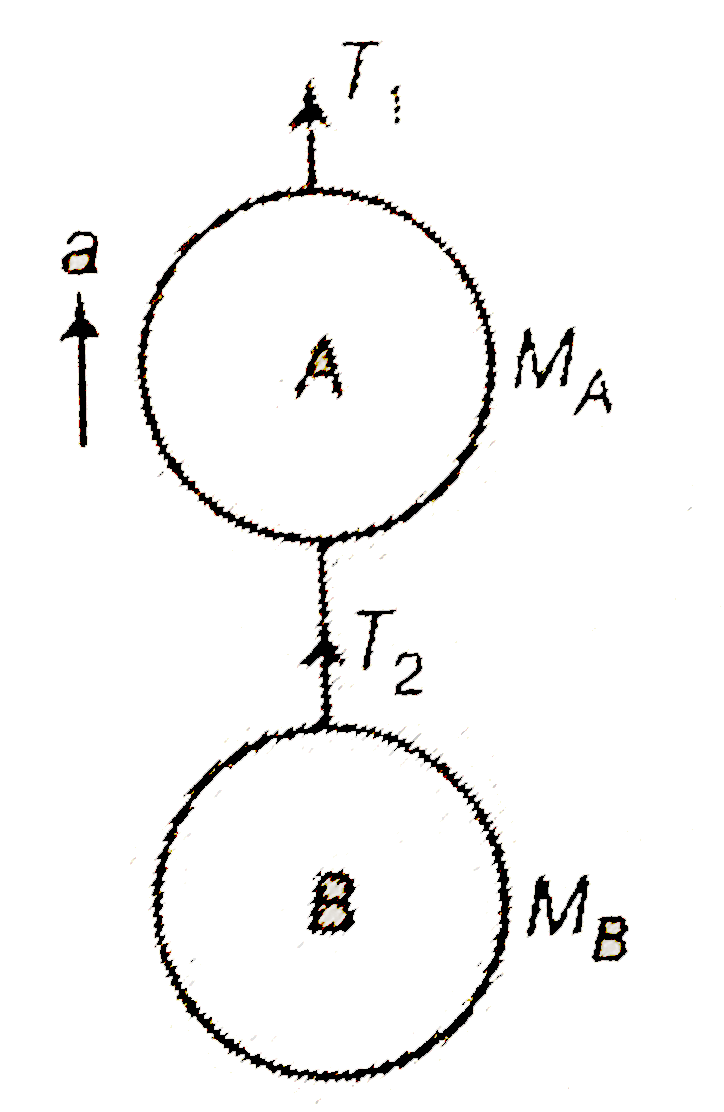
A
T1=MA(a−g)+MB(a−g),T2=MB(a−g)
B
T1=MA(g−a)+MB(g−a),T2=MB(g−a)
C
T1=MA(g+a)+MB(g+a),T2=MB(g+a)
D
T1=MA(g+a),T2=MB(g+a)
Video Solution
Text Solution
The correct Answer is:C
The force diagram of system (A+B) is shown in figure.
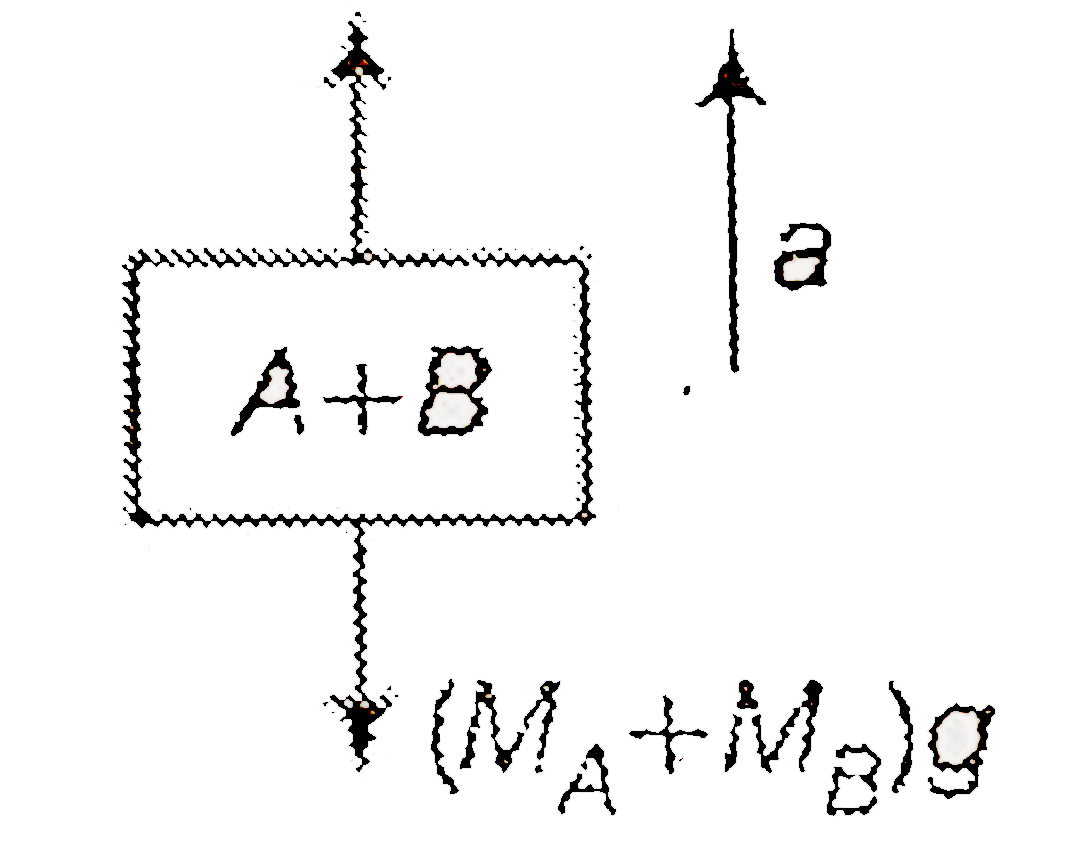
Here, T1−(MA+MB)=(MA+MB)a
∴ T1=(MA+MB)g+(MA+MB)a
=(MA+MB)(g+a)
The force diagram of body B,
T2−Mbg=MBa
∴ T2=MB(g+a)
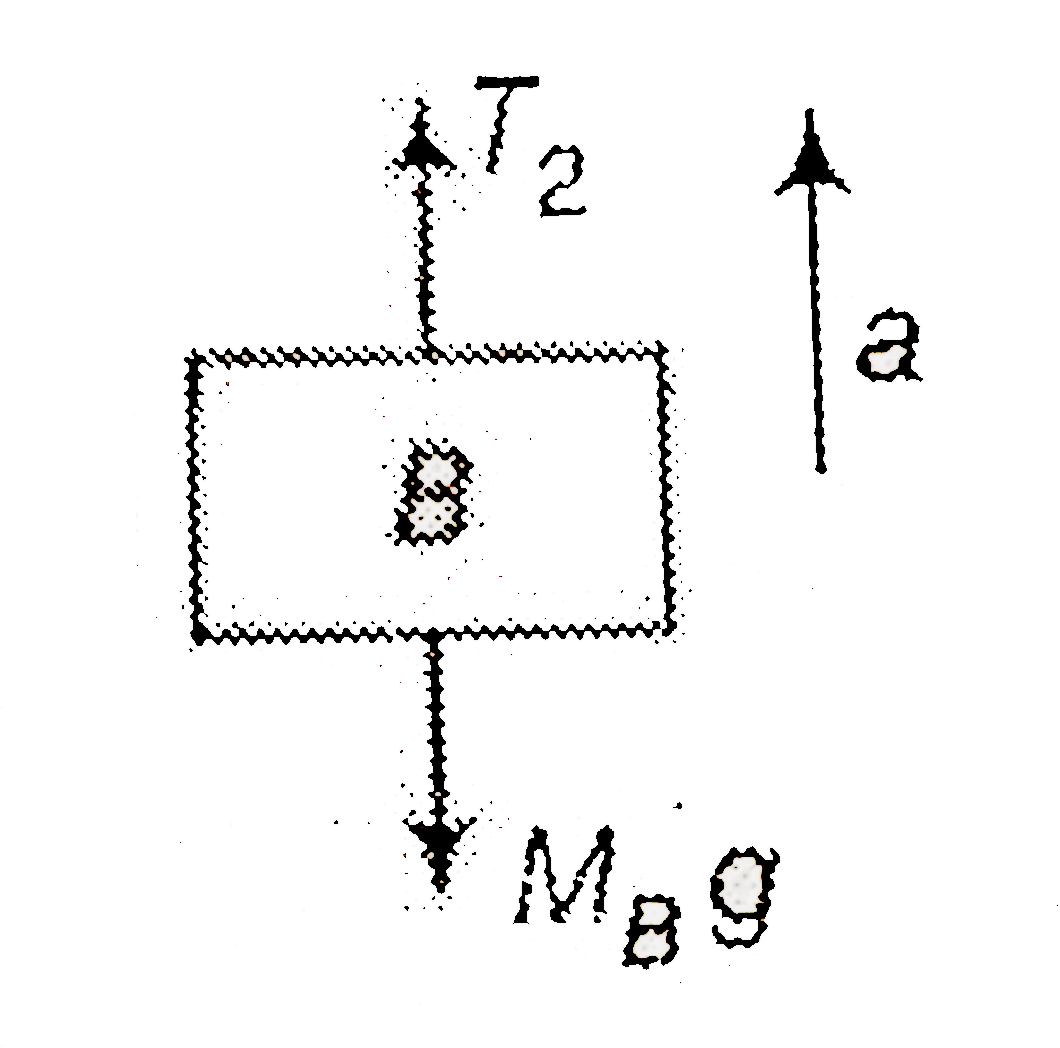
|
Topper's Solved these Questions
- NEWTONS LAWS OF MOTION AND FRICTIONBOOK - BITSAT GUIDECHAPTER - NEWTONS LAWS OF MOTION AND FRICTIONEXERCISE - BITSAT Archives
23 Videos
- MOTION IN !,2,2 DIMENSIONS AND POJECTILE MOTIONBOOK - BITSAT GUIDECHAPTER - MOTION IN !,2,2 DIMENSIONS AND POJECTILE MOTIONEXERCISE - All Questions
86 Videos
- ROTATIONAL MOTIONBOOK - BITSAT GUIDECHAPTER - ROTATIONAL MOTIONEXERCISE - BITSAT Archives
9 Videos
Similar Questions
Knowledge Check
Among the following, which expression correctly represents linear combination of atomic orbitals ?
AΨAB=ψA×ψBBΨAB=ψAψBCΨ⋅AB=ψA−ψBDΨ⋅AB=ψ2A×ψ2BWhich of the following plots correctly represents the variation of the magnitude of acceleration |aR| with time t for a particle projected at t=0 with speed v0 at an angle θ above the horizontal?
A B
B C
C D
D
The expression [ML2T−2] represents
APressureBKinetic energyCMomentumDPower
Which of the following expressions correctly represents the expression "eight times a number z"?
View SolutionWhich of the following expressions 'correctly' represents the expressin ''fifteen divided by a number x"?
View SolutionWhich of the following expressions correctly represents the expression "number n divided by seventeen"?
View SolutionWhich of the following correctly represent the labelling of A, B, C and D w.r.t given diagram.
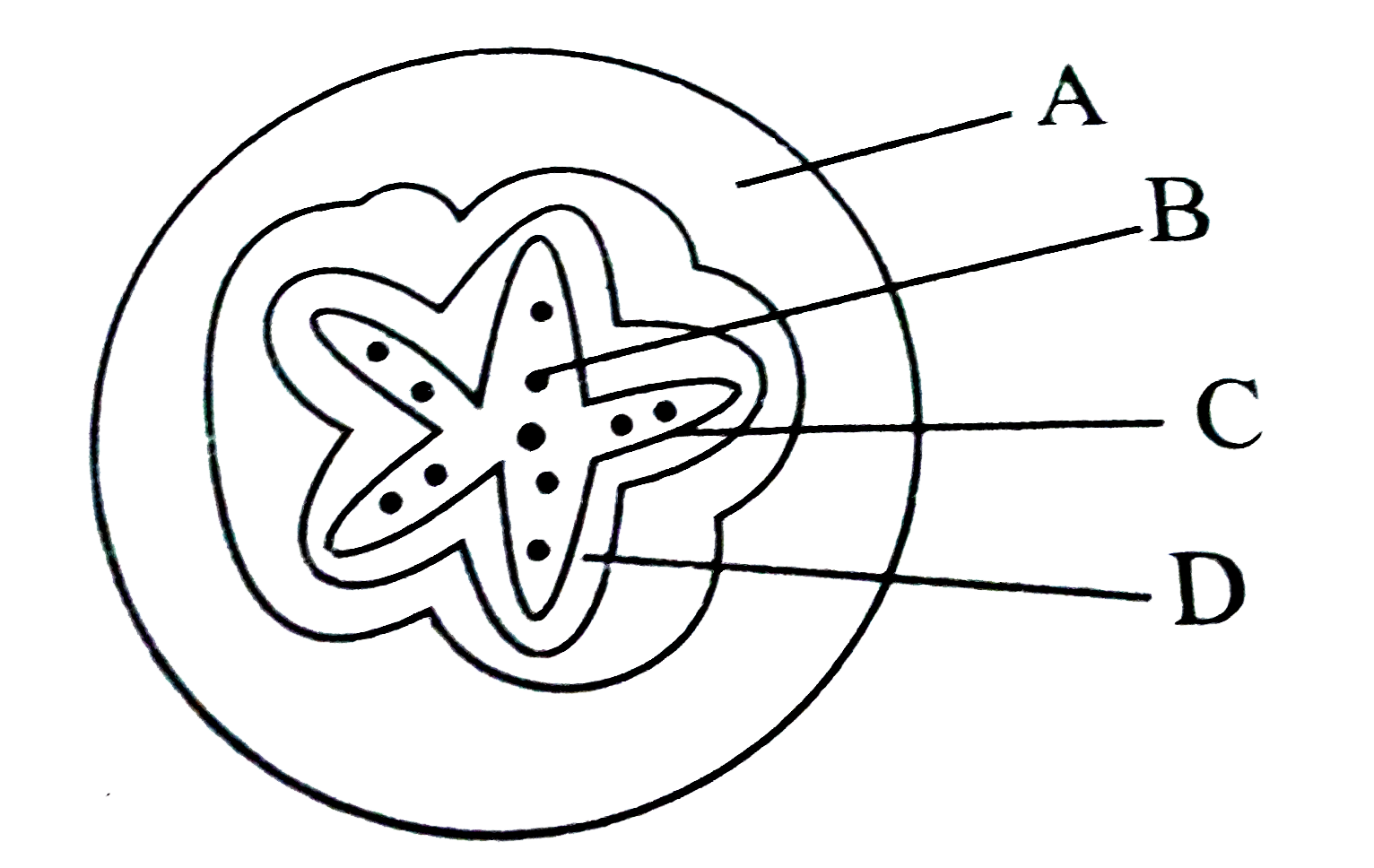
View SolutionTwo masses of 5kg and 3kg are suspended with help of massless inextensible strings as shown in figure. Calculate T1and T2 when whole system is going upwards with acceleration =2m/s2(useg=9.8ms−2).
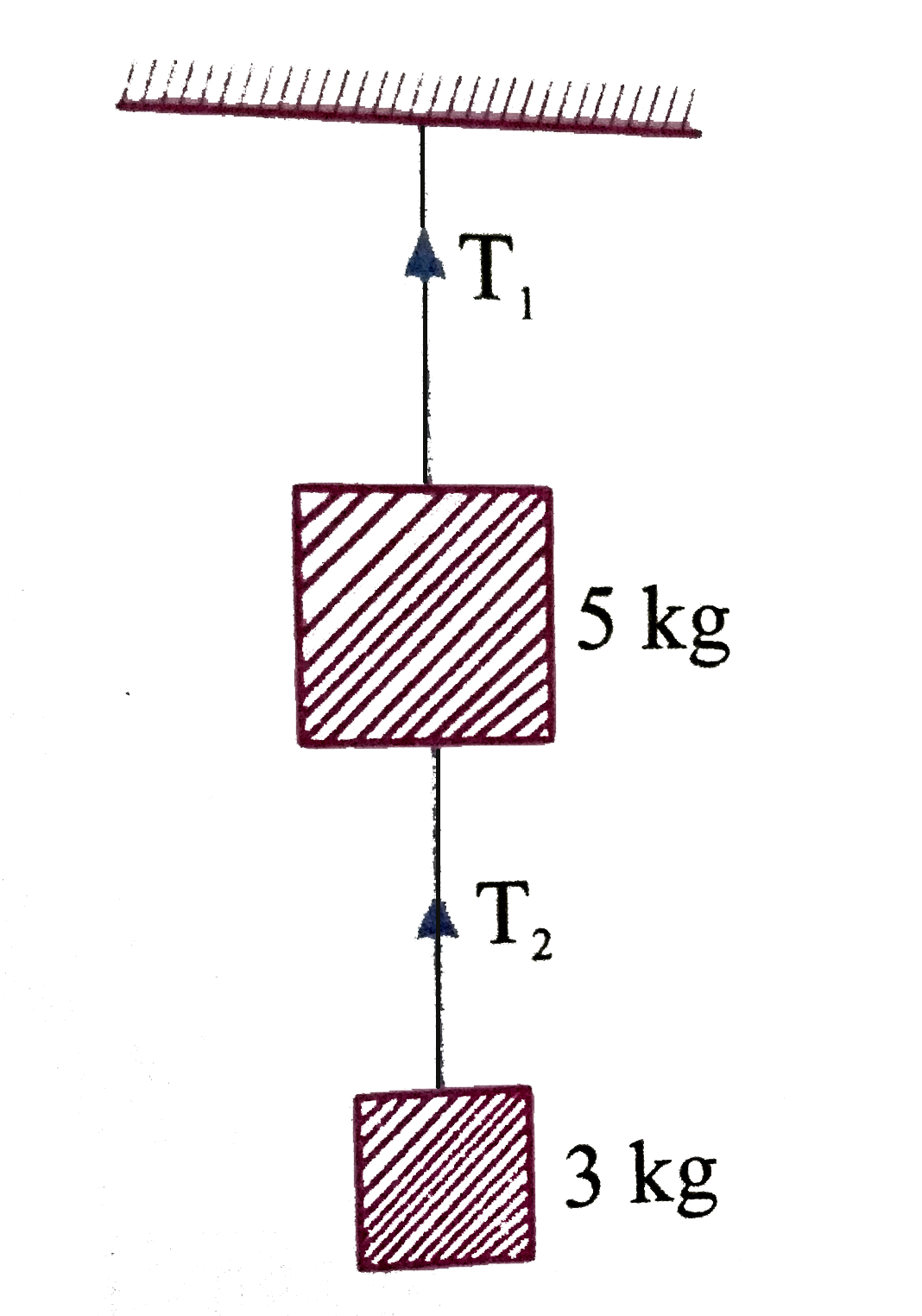
View Solution


